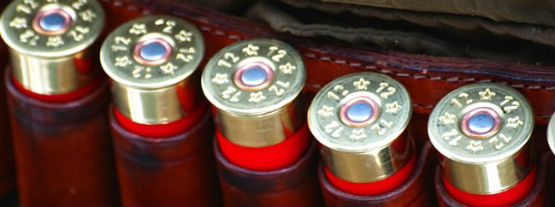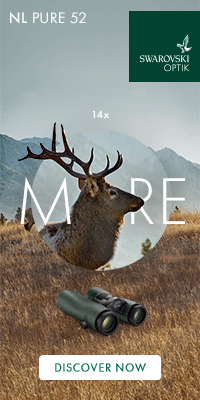In the first of two articles Senior CIC Trophy Judge Iain Watson looks at what many consider to be our greatest sporting challenge

When John Buchan’s novel John Macnab was published in 1925 little could the author have imagined that the challenge he set for his 3 fictional characters, would be alive and well, and very much sought after, on Scotland’s sporting estates, almost 90 years later. His original idea has over time spawned all types of variants, from lowland to urban, and in its various forms has included all manner of fur, feather and fin, but the original surely remains the best…. the one to get. The “Macnab” name has become synonymous with highland sport and is used as a marketing tool for all manner of sporting goods, from guns to artist’s prints from cartridges to salmon flies, the ranges have grown and proliferated over the years.
If you are unfamiliar with the book and its plot, it revolves around three friends who bored with their daily lives decide to poach a stag and a salmon from three estates owned by three very different people, having given due notice of their intentions under the name John Macnab. As the plot unfolds they are aided and abetted by a number of interesting characters.
As the decades have rolled on the original has been expanded to include the shooting of a brace of grouse, bringing together all three of Scotland’s iconic species as the ultimate sporting trinity. To add to the difficulty this has to be achieved on a single day, and for the purist within the marches of a single sporting estate. No mean feat, but it can be done, as is shown each autumn.

(Above: Shotgun, Rifle and Rod all play a part in the Macnab challenge)
However there are a number of obstacles in the way of anyone who wants to tick it off their bucket list. As well as having to be proficient at three separate disciplines, with two types of firearm, there is a limited window in which it can be attempted. Grouse after all don’t come into season until the glorious 12th of August. Stags in Scotland finish on the 20th of October, and most are not clean of velvet till early September. As for the salmon, well unlike the other two they alone, north of the border, have different openings and closings in individual fisheries districts, and added to this some owners close their waters as early as the end of September. Then on top of all that there’s the Scottish weather. Too much rain equals too much water, to dry not enough; autumn mists and fogs no access to the hill. In essence then if you are going to pit your skills against all three on one day the window opens on the 12th August and closes with the last day of the salmon, for most October the 15th.
There are I suppose two types of Macnab, the unplanned and the planned. If you are lucky enough to be part of a lodge party on an estate in the Highlands or Islands and all three species are on the menu, and available, and you get off to a flying start with an early fish then opportunity knocks. Well at least it does if your party has access to those other two critical requirements an estate stalker, and a dog handler familiar with the red grouse and its habits. Even without these you might, just might, manage to get all three before the sun dips out in the west over the Atlantic.
 So what is there to achieving this sporting goal? Well apart from the issue of a tolerable degree of physical fitness, the most likely route to success is to find an agent and or an estate that has access to all three species, has done its homework in terms of its stocks, and has planned for the challenge.
So what is there to achieving this sporting goal? Well apart from the issue of a tolerable degree of physical fitness, the most likely route to success is to find an agent and or an estate that has access to all three species, has done its homework in terms of its stocks, and has planned for the challenge.
It’s also important that you make sure that you factor in a realistic amount of time to provide some insurance against the vagaries of the weather and the seasonal conditions.
(Above: "Experience suggests that the fish needs to be on the bank by mid day")
There’s little dispute that the most difficult element of the Macnab is the catching of the salmon on a fly, and so for most people that becomes the starting point, though I have seen the stag being tackled first depending on the topography of the estate and the weather conditions. The skill set of the salmon fishing ghillie is a bit of a mystery to many of us, certainly it is to me, and there can be little doubt that if you have access to a good one you should cultivate the relationship, for he really holds the key to success. He knows where fish lie, how to approach them, what to use, and critically when to stop flogging a dead horse!
As the autumn brings with it shortening days, it is important as part of the plan to agree the time limit in which the salmon has to be caught by. Experience suggests that the fish needs to be on the bank by mid-day, and then having regrouped an attempt can be made to find and shoot a brace of grouse. Often the most productive approach to this is to use a pointer, using a dog that is familiar with these birds. Where the estate has a reasonable stock of birds the grouse should prove to be the least taxing element of the day.
Two species successfully accounted for, and one to go. If all has gone to plan there should be between 3 and 4 hours of usable light remaining in the day…… Well that’s the intention anyway.
As the 2014 Scottish sporting season swings into life in the coming two weeks, the fictional John Macnab and his challenge will rise again. Here on the Outer Islands we are gearing up to offer the opportunity to a limited number of visiting sportsmen. The salmon have started to arrive, the grouse seem to have benefited from a dry spring and summer, and the stag groups look to be established on their pre rut home ranges. All we need now is…. steady river levels, not too much sun, bit of a breeze to keep the midges at bay, but not too much wind, oh and none from the east, no mist or fog, our dogs to be on good form, not to many ramblers or hill walkers, and lastly the guests able to shoot and cast a line. All in all pretty straightforward!
In the next part theory goes into practice as the attempts at achieving the 2014Macnab get underway.
Iain Watson is the CIC Senior International Trophy Judge and Expert to the UK Delegation of the CIC. To read more about the CIC and its work follow this link: the-cic-and-it-s-trophy-measurement-system



















